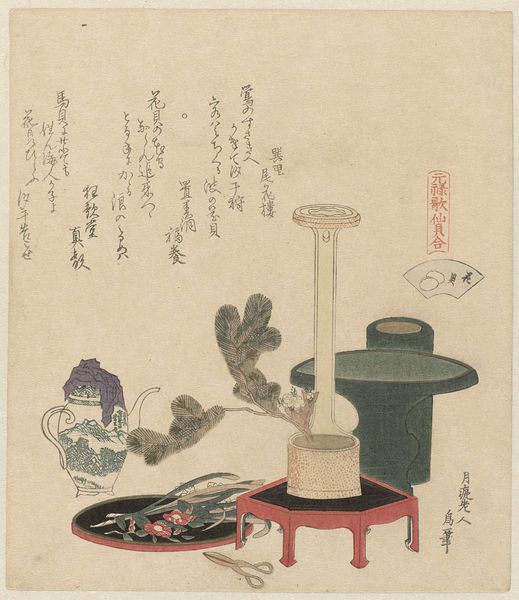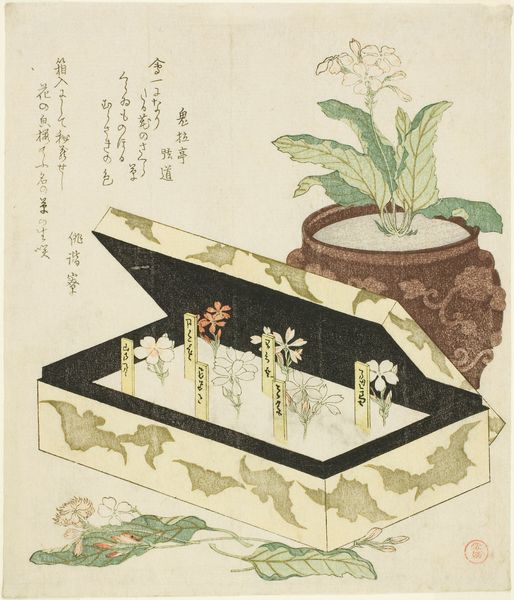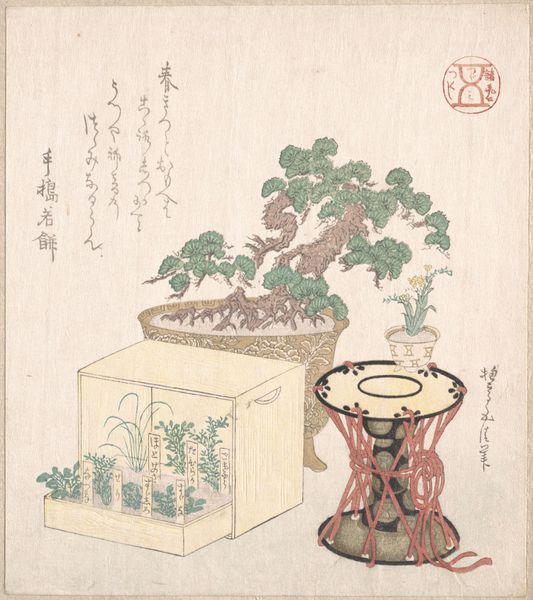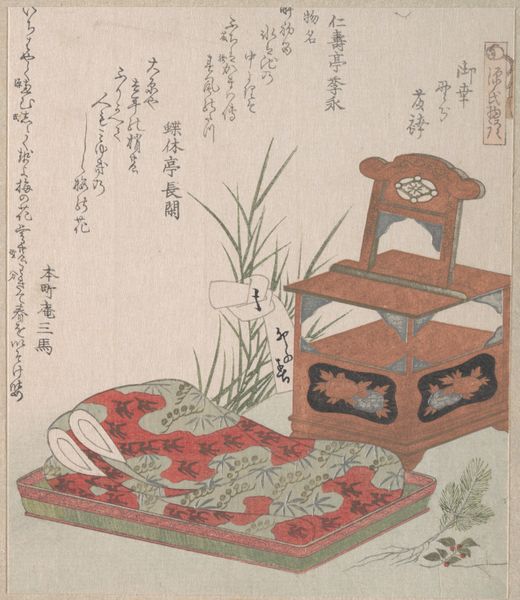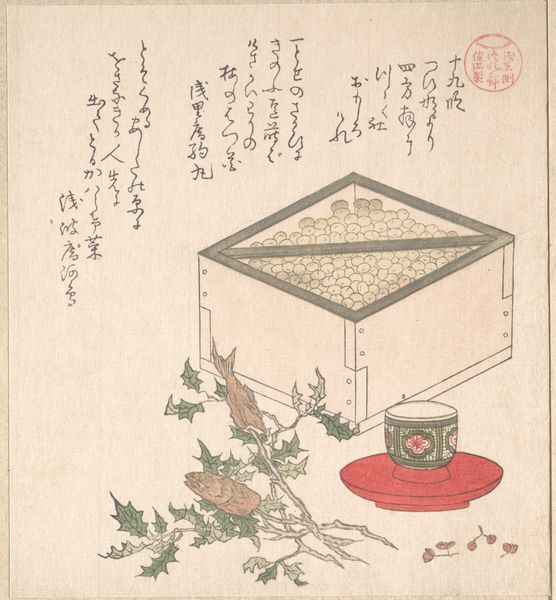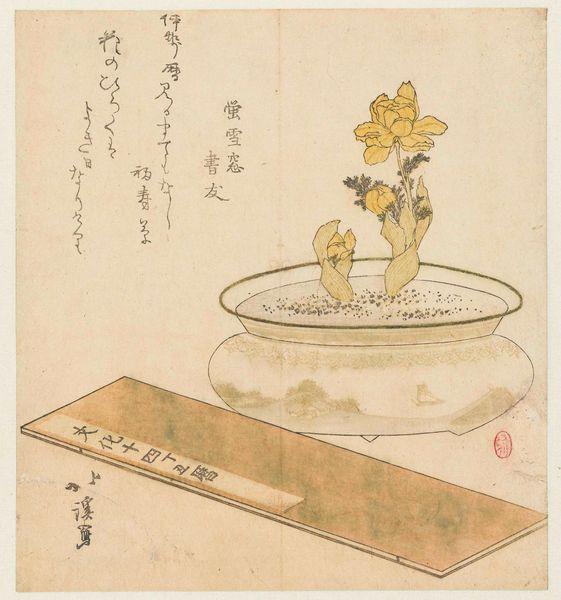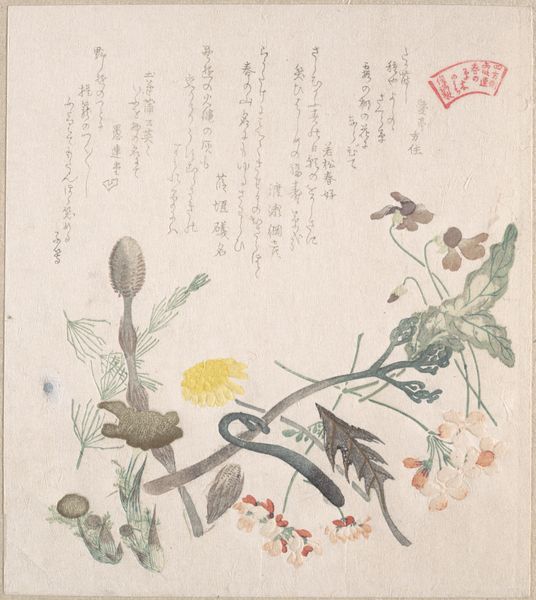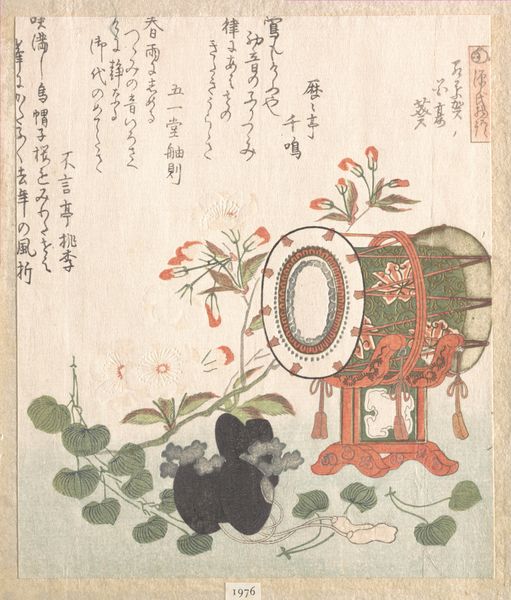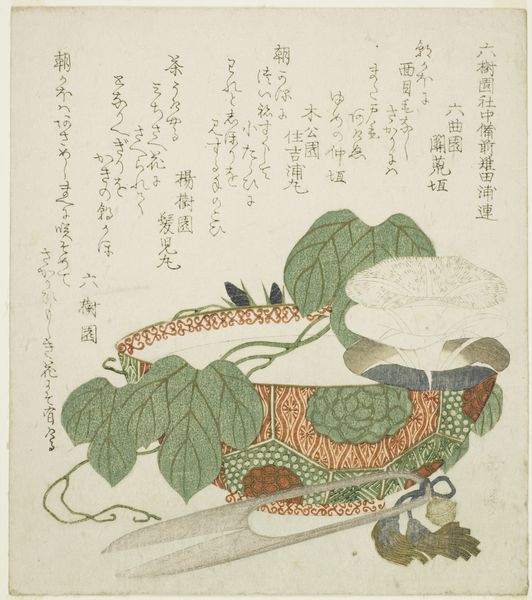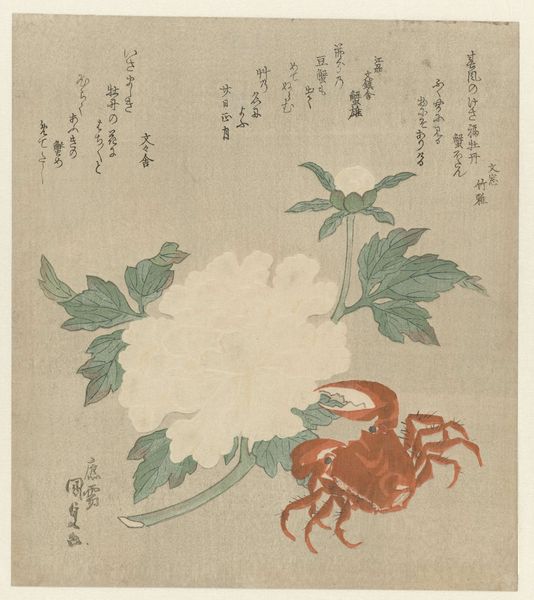
print, woodblock-print
#
water colours
# print
#
asian-art
#
ukiyo-e
#
woodblock-print
#
watercolor
Dimensions: height 208 mm, width 184 mm
Copyright: Rijks Museum: Open Domain
Curator: We're looking at a print called "Still Life With Primula in Flower," made in 1823 by Totoya Hokkei. Editor: It has this delicate melancholy... those faded watercolors, and the way the objects huddle together, it’s like peering into a quiet room where someone’s paused for a moment. It all feels terribly poignant and gentle. Curator: It’s a woodblock print, part of the Ukiyo-e tradition—which is interesting because usually we associate that with landscapes or beautiful women. Still lifes are less common, so it feels very fresh. You have a primula in a pot, next to what looks like a container and then there's this blossoming plum branch to the side. Editor: Right. And all that incredible detail from the printmaking process itself, those lines around each petal or leaf, are just staggering. Look at that little ceramic container with the pine branches, and the tied tassel... They feel quite humble and ordinary as objects but rendered in such exquisite care. And that color, that red…almost rusted with age, like memories that fade but don't disappear. How would that level of skill influence our view of commercial trade back then? Curator: It's interesting to think about the status of such everyday objects elevated by the artistry and time poured into crafting the prints themselves. These prints were produced and consumed in large quantities in the 1800s and distributed in commercial book trade channels. Editor: The social impact then could have been pretty wide, since mass printing has this ripple effect from the creation of art to the everyday viewing pleasure of consumers, so one questions what was "high" or "low" brow back then, since craft itself was so widely valued, right? Curator: Indeed! Hokkei's creation offers a wonderful glimpse into a vibrant intersection of craft and cultural appreciation from nearly two centuries ago. Editor: Agreed. It almost forces us to reconsider our assumptions about material culture of this period.
Comments
No comments
Be the first to comment and join the conversation on the ultimate creative platform.


